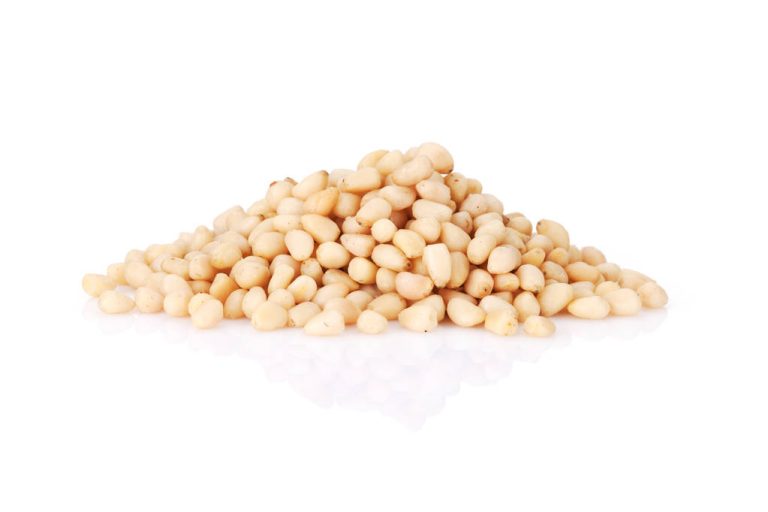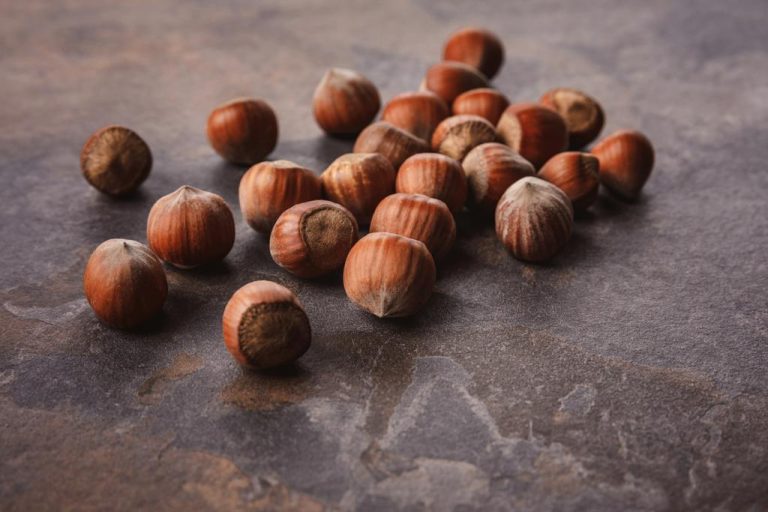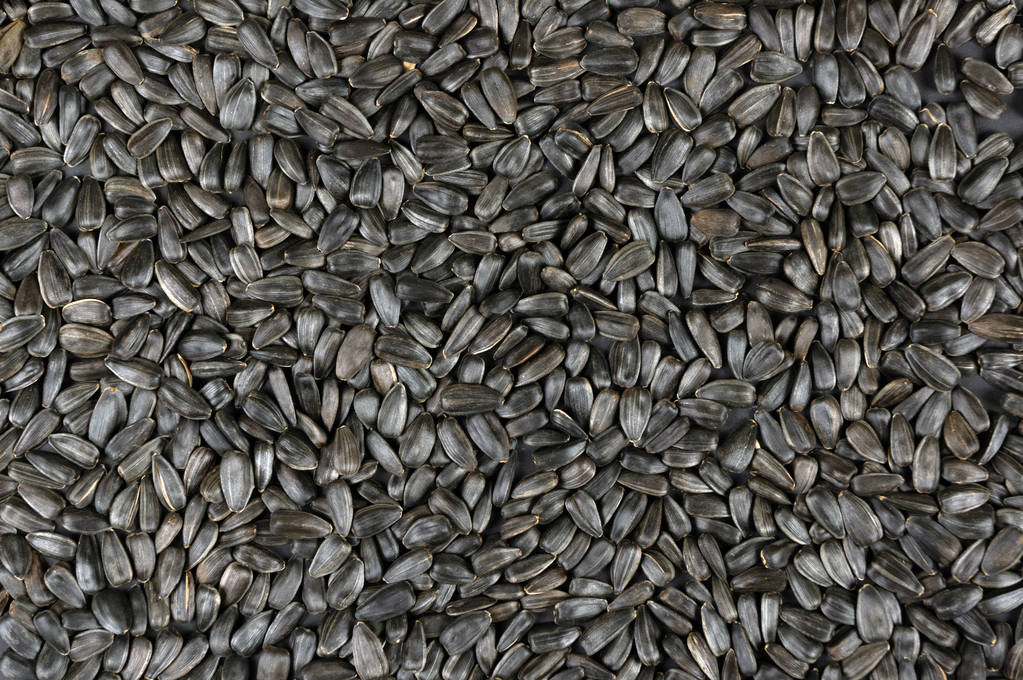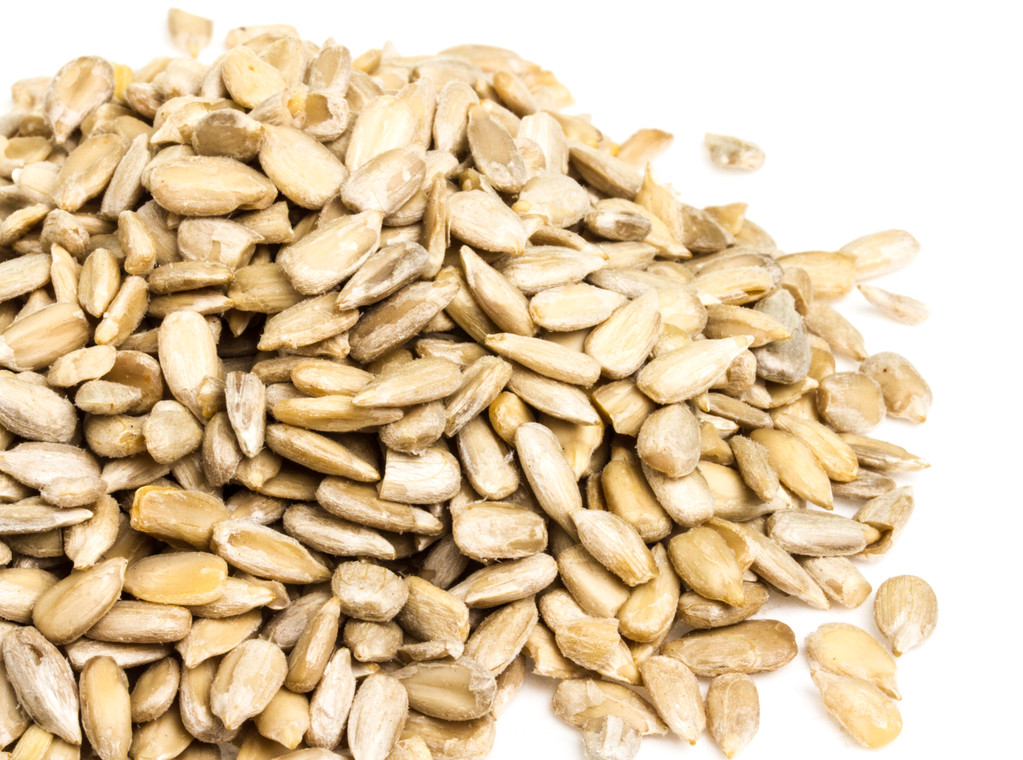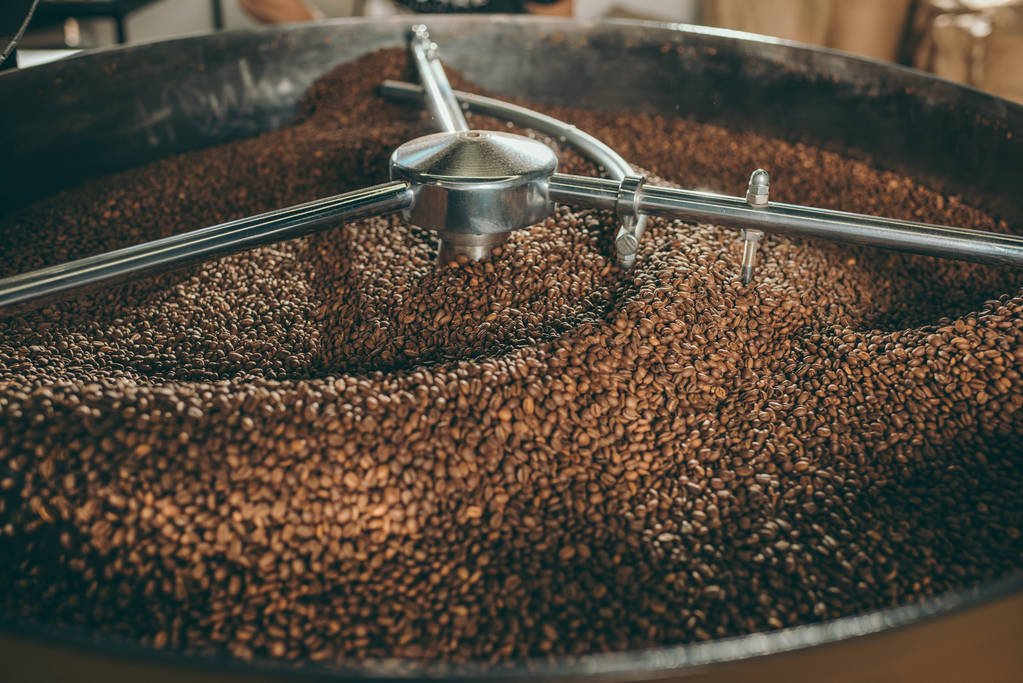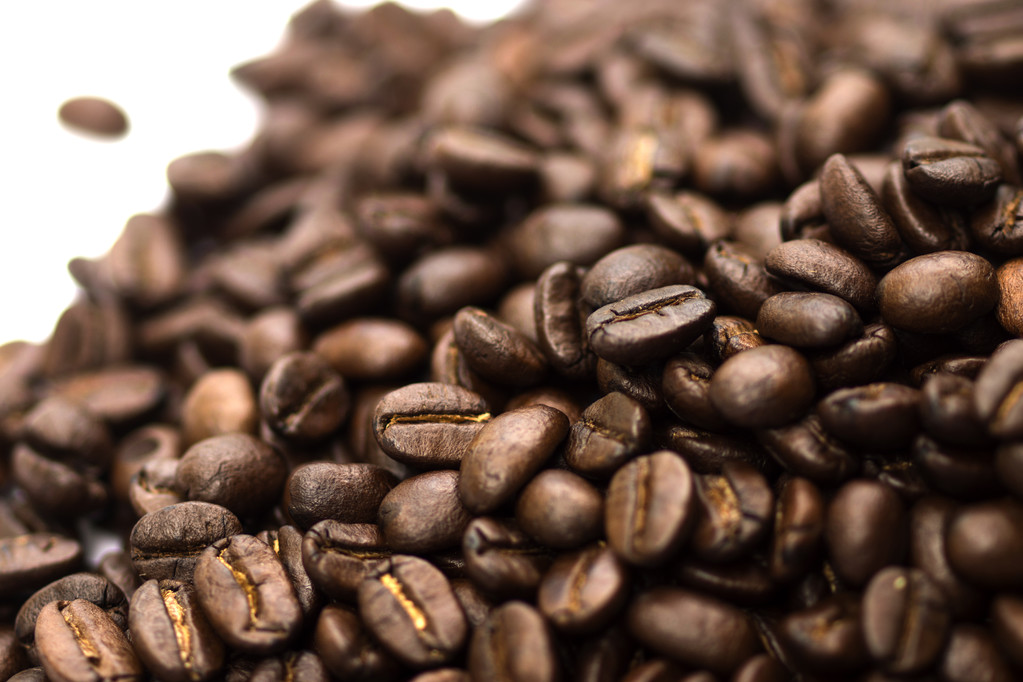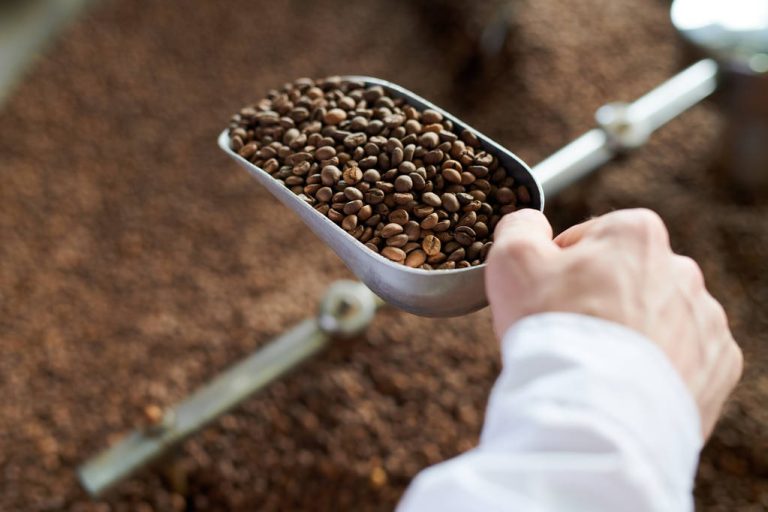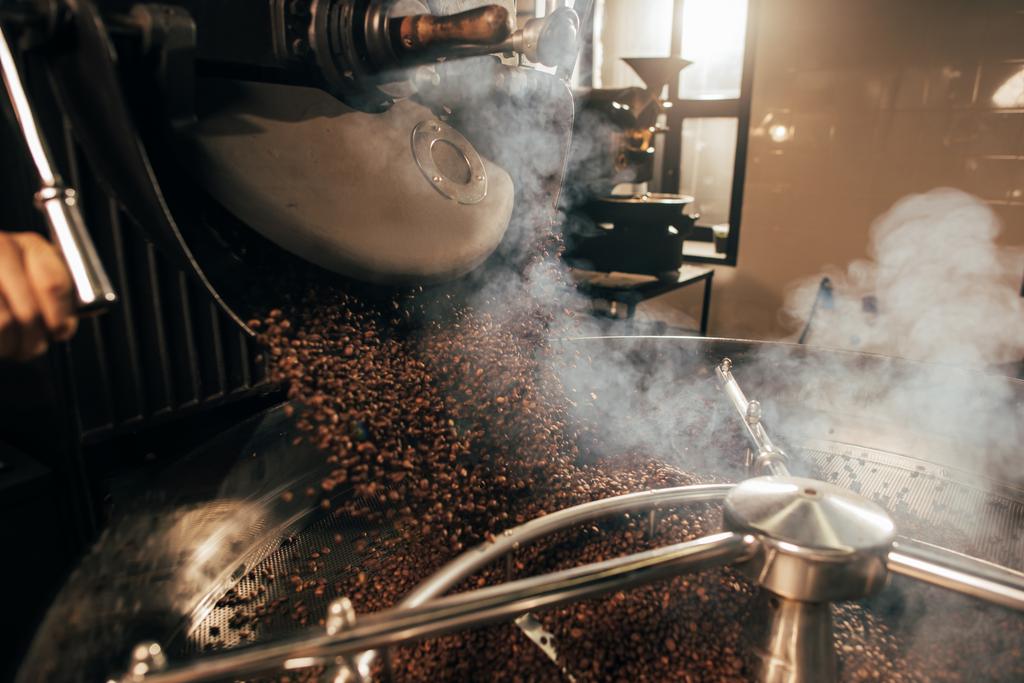Roasting process

The refining of the green coffee is probably the most important step in the value chain. During the roasting process, the bean not only gets its brownish color, but also develops its irresistible aroma and acidity. But their weight, size and smell also change. This happens through complex chemical reactions inside the bean. The roasting time and temperature depend on the type of coffee or type and the desired result. The same beans roasted at different temperatures and times will have different flavor profiles. Decaffeinated coffee beans are decaffeinated before roasting – the aroma and taste are not or hardly affected.
How do you roast coffee? There are two ways to roast the beans:
The hot air process with hot air up to 600˚C
Drum roasting with slow, gentle roasting at temperatures around 200˚C
Hot air process
During the hot air process, the green coffee is roasted in a very short time (approx. 2 – 5 minutes) with extremely hot air (up to 600 ˚C). However, this process often leads to uneven roasting, in which the beans are still raw on the inside. However, with hot air roasting, a large amount of green coffee can be processed in a very short time. The beans are then cooled with water and/or air and packaged.
Drum roasting
Drum roasting is not suitable for refining large quantities of green coffee, because time is an important factor here. At temperatures of around 200 degrees, the green coffee is roasted in 14 – 25 minutes. This slow, gentle process allows the aromas and acids to develop optimally and the beans to be roasted evenly.
Acids that are unfriendly to the stomach can also be broken down in this way. The master roaster decides when the roasting stops and the beans are placed on the cooling sieve to cool down. Only a short moment decides on taste and variety of aromas.
We also use the drum roasting process for our Coffee Perfect house roasts.
Degrees of roasting
Coffee drinkers have different tastes. Some prefer lighter roasts with a floral or fruity aroma. Others prefer darker roasts with a spicy aroma and bold flavor. The following degrees of roasting are the best known:
Light Roast / Cinnamon Roast
Medium Roast / American Roast
Strong roast / Viennese roast
Double Roast / French Roast
Italian Roast / Espresso Roast
Spanish roast
Coffee sommelier/coffee expert
A coffee sommelier combines both knowledge about the production of a perfect coffee and knowledge about the cultivation, processing and refining of green coffee. He is able to create harmonious coffee blends and give the beans a personal profile during roasting. He can recognize the type of coffee, the growing area and the special features of coffee beans and evaluate their quality.
The job of a coffee sommelier
The area of responsibility of a coffee sommelier cannot be defined precisely, as it is not a profession but a recognition of his coffee expertise. A coffee sommelier can be involved in many different jobs in the coffee industry.
He can be a roaster or importer, restaurateur or barista or just a coffee lover who has studied his favorite beverage in more detail. Above all, it is about passing on knowledge and preserving or bringing back the coffee culture.
How do you become a coffee sommelier or an expert?
There are a number of ways to learn more about coffee. Various courses and with different levels of learning offer certificates or diplomas. The courses are aimed at people who work with coffee professionally and want to expand their knowledge.
If you successfully complete your training (not training in the sense of an apprenticeship) at the “Institute for Coffee Experts” in Vienna, you are called a qualified chief coffee sommelier. Before that, however, one must pass two previous courses. There are also opportunities to take coffee sommelier courses in Hanover and Cologne.
The SCAE – Specialty Coffee Association of Europe – also offers advanced and further training courses in three different learning levels for those interested in coffee. The international association of coffee specialists and lovers has set itself the task of improving coffee quality. With the Coffee Diploma System, a program has emerged that is not only recognized by its worldwide members (importers, roasters, baristas, restaurateurs and retailers), but above all imparts extensive coffee knowledge in six modules. Those who achieve a total of 100 points by passing the six modules receive the Coffee Diploma, which demonstrates well-founded and wide-ranging coffee expertise.
Coffee blends
Only after the coffee beans have been refined are the individual types mixed with others in order to obtain an aromatic composition with fine acids and a full body. Only in a few exceptions are the beans mixed before roasting. Mixtures are called “blend” in the coffee genre. These can consist of Arabica and Robusta beans, as well as 100% Arabica beans that come from different growing countries. Coffee beans that only come from one country but from different regions (provenances) are called “Pure Origin”. “Terroir” coffee, on the other hand, is single-origin. The coffee beans come from only one growing area. The taste of single-origin coffees can vary greatly, since no other varieties are added to get the usual taste. For the same reason only the highest quality beans with the best characteristics are used for “Terroir” coffee.
Reasons for making a “Blend”:
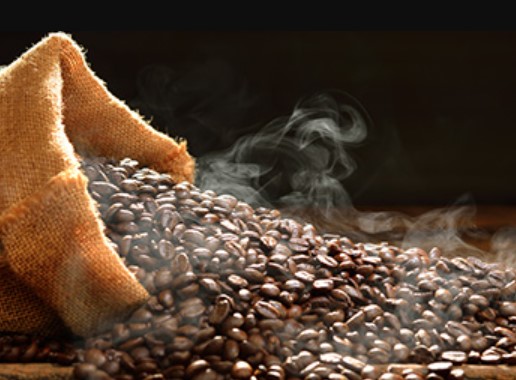
Cost reasons
The production of blends is much cheaper than the production of single-origin coffees. “Inferior” beans are also not noticeable in a blend with several types of coffee, since their bad properties are masked by the properties of high-quality beans.
Maintaining taste
A roaster tries to compensate for the natural fluctuations in the taste of the beans by making slight deviations in the mixture and roasting and thus maintaining the usual taste profile. Consumers get their usual coffee taste with every coffee purchase.
High-quality blends
Coffee blends with high-quality beans can result in a harmonious flavor composition in which the properties of the beans complement each other. If there are beans with taste deficits, these can be offset by the properties of other varieties.



